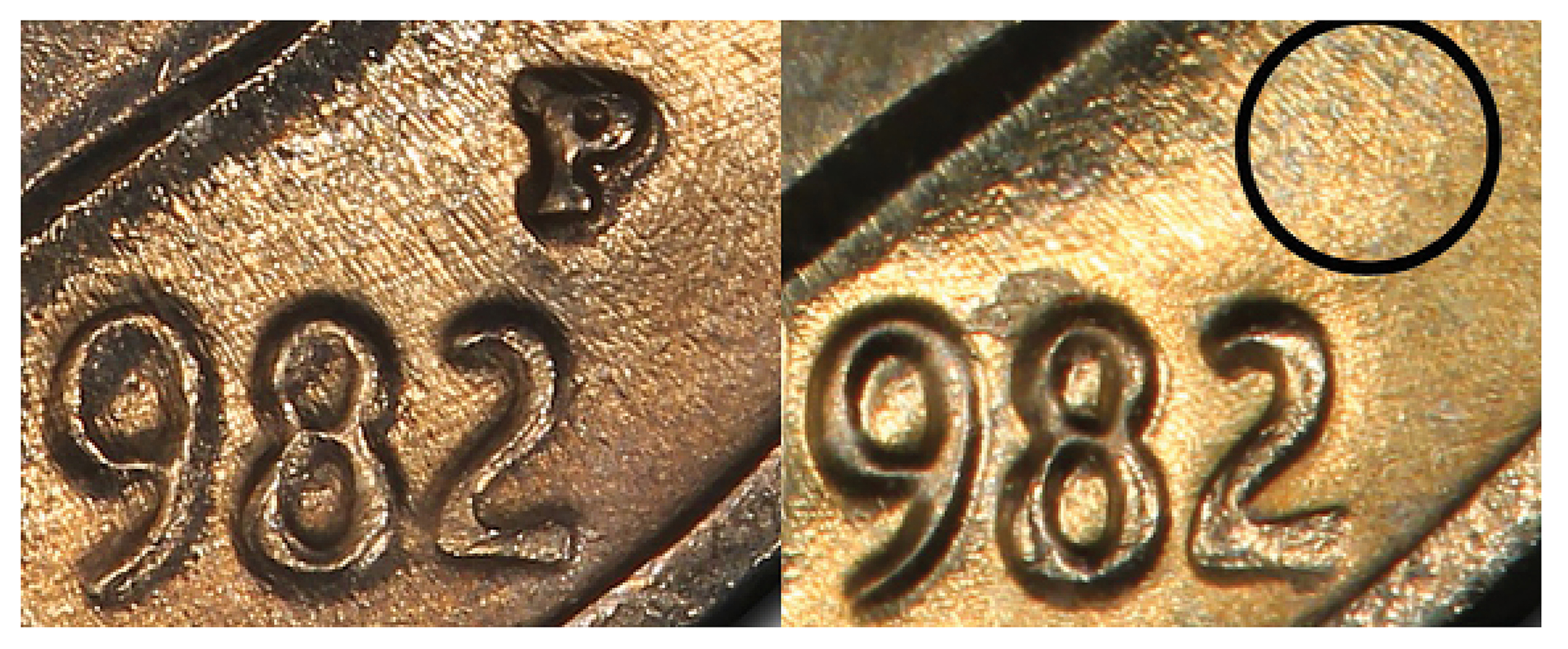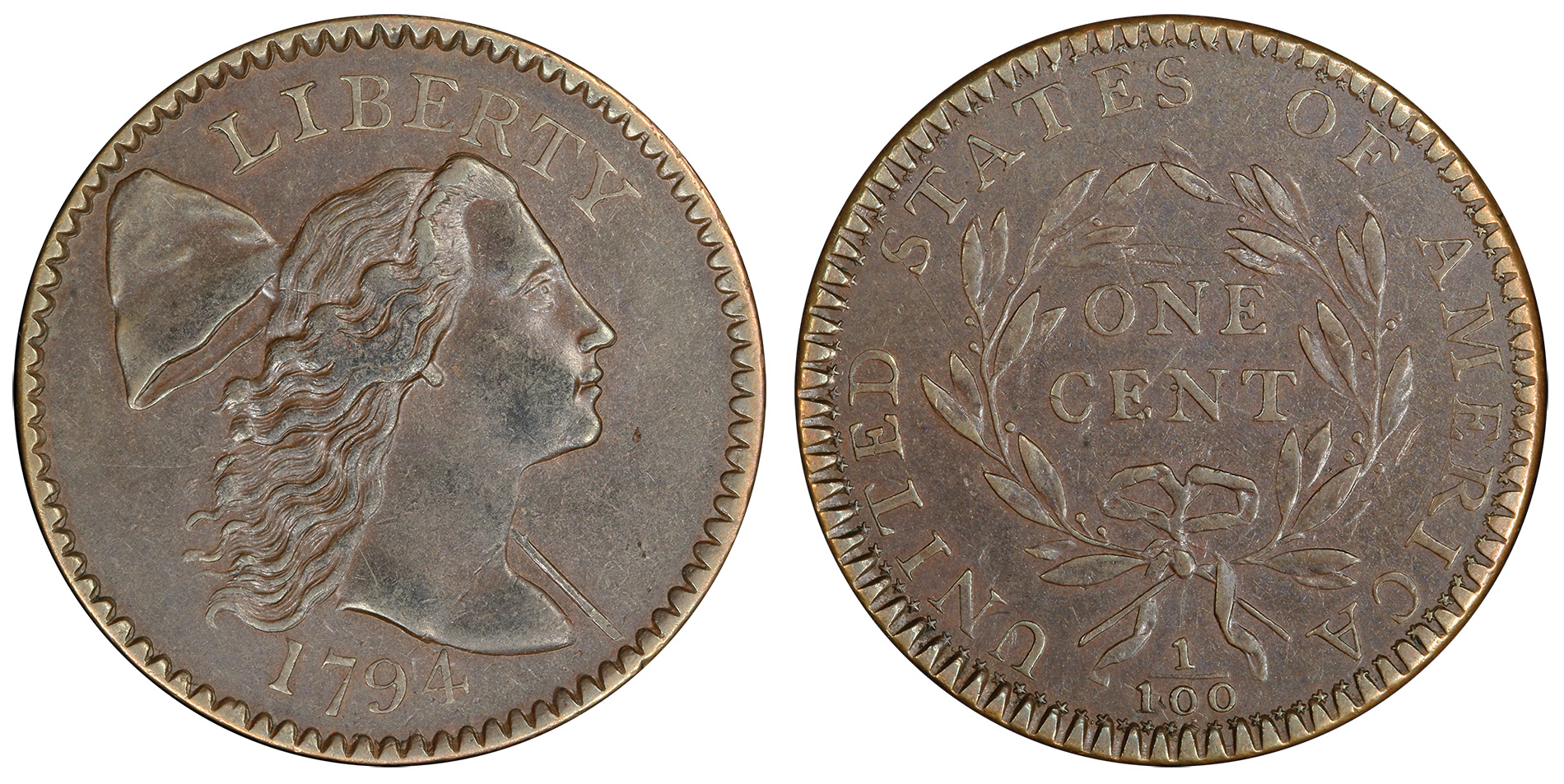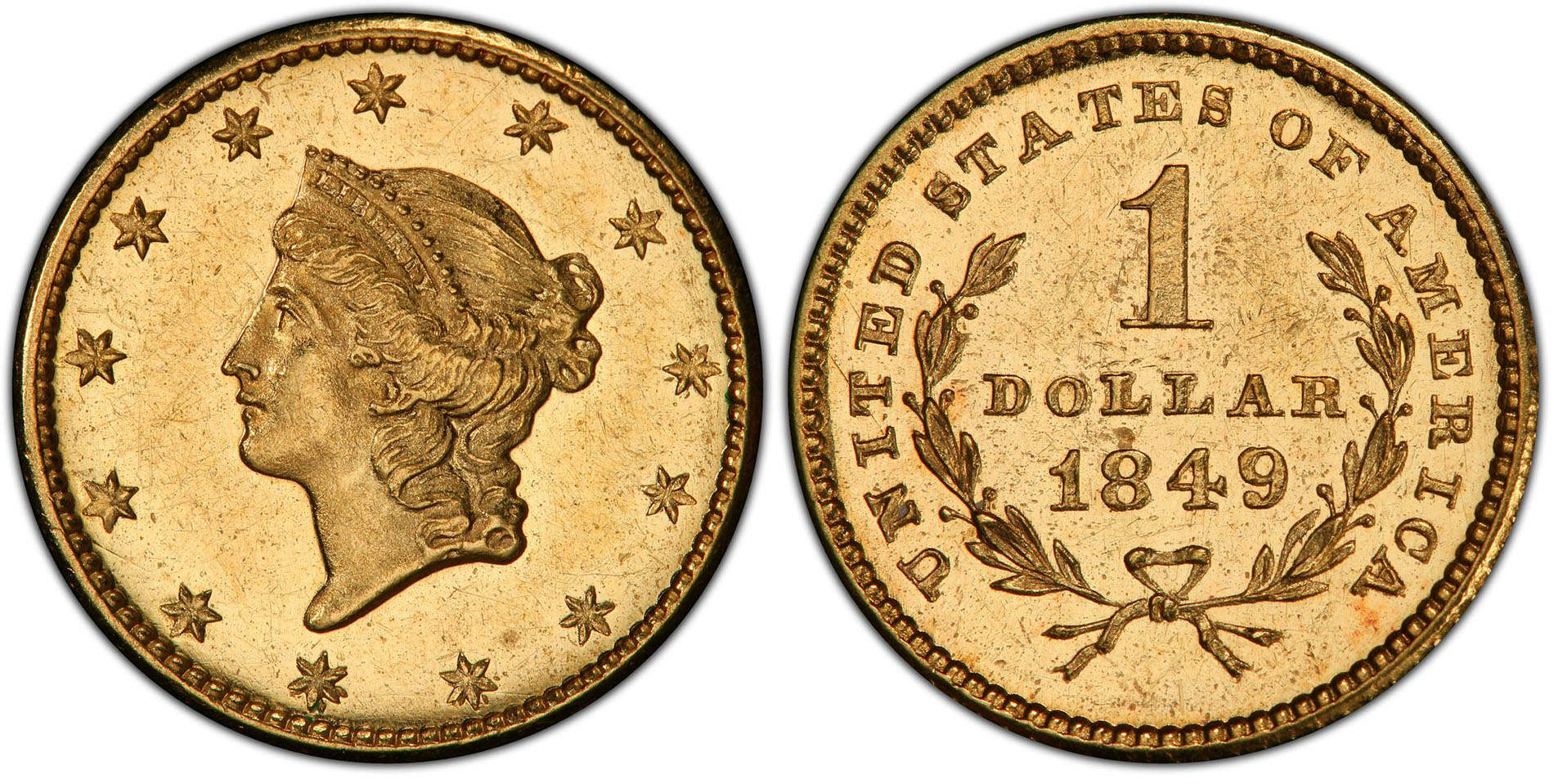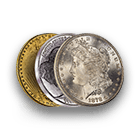One of the most valuable modern United States coins isn’t a Lincoln Cent, a Washington Quarter, or a gold coin from the American Eagle series. It’s a 1975 Roosevelt Dime. This dime, struck at the San Francisco Mint for inclusion in that year’s proof sets, is missing one important detail: its “S” mintmark. As we will see later in this article, the 1975 No-S Proof Roosevelt Dime would go on to hammer for more than $500,000 at auction. But it’s not the only mintmark-less dime that intrigues numismatists.
There were several Roosevelt Dimes struck during the 1960s, 1970s, and 1980s sans mintmark that have become highly sought-after collectibles. And while the flurry of headlines around the 1975 No-S Proof Roosevelt Dime has certainly brought more attention to this area of collecting in recent months, these modern recherché curiosities have long fascinated collectors.
In all, there are five dates of the Roosevelt Dime series from the copper-nickel clad era (which began in 1965) that are known for their missing-mintmark error varieties. They are the 1968 No-S Proof, 1970 No-S Proof, 1975 No-S Proof, 1982 No-P business strike, and 1983 No-S Proof.
1968 No-S Proof
The year 1968 marked a pivotal time for the United States Mint. A massive coin shortage in the early 1960s, alongside rising silver prices, ultimately led to the demise of the 90% silver circulating coinage. Striking coins from base-metal clad addressed the production costs associated with ballooning bullion values. As for addressing the coin shortage, U.S. Mint officials removed mintmarks from new coins with the stated intention of curbing collecting activity. The U.S. Mint also temporarily discontinued the sale of annual proof sets and uncirculated sets, instead offering collectors “Special Mint Sets.” These include five coins – one cent, one nickel, one dime, one quarter, and one half dollar – struck in a Specimen finish of higher quality than business strikes but not quite as refined as proofs.
Things returned to a new type of “normal” in 1968, when mintmarks were resurrected on coins and the annual proof sets and uncirculated sets were brought back to the production lineup. However, a few things had changed since proofs were previously struck in 1964. During the frenetic production pace of the mid-1960s, the San Francisco Mint – at the time officially designated the San Francisco Assay Office – had proven its minting capabilities in a way it hadn’t been able to since 1955, when circulating coins were previously struck there. Following the San Francisco Mint’s deft production of un-mintmarked coinage during the mid-1960s, the United States Mint delegated the manufacture of proof sets to San Francisco beginning in 1968. This led to the now-given custom of the San Francisco Mint being the primary production facility for proof coinage.
By and large, the San Francisco Mint proved its mettle once more in its near-flawless output of more than 3 million proof sets in 1968. However, a small number of 1968 Proof Dimes were struck without their “S” mintmark. This arose from a 1968 Proof Dime obverse die not being punched with an “S” mintmark at the Philadelphia Mint, where proof dies were prepared at the time. It’s the type of error variety that one might expect during such a transitional period, and it’s one that San Francisco Mint officials must have caught on to rather early, as very few 1968 No-S Proof Dimes are known. In fact, beyond the 1975 No-S Proof Dime, the 1968 No-S Proof Dime is the rarest of these modern dime varieties. Only a few dozen examples of the 1968 No-S Proof are known, with most of those absent frosting, or cameo, effect on the design, inscriptions, and other raised elements.
Values for the 1968 No-S Proof hover around $12,500 for an example in PR65, with prices closer to $22,000 for one of the handful of examples in PR68. Examples graded PR68CAM trade in the neighborhood of $35,000, while the all-time price record was realized in 2006 for a PCGS PR68CAM that fetched $48,875.
1970 No-S Proof
A couple of years after the erroneous emission of the 1968 No-S Proof Dime came yet another S-less coin in the form of the 1970 No-S Proof. The 1970 No-S Proof Roosevelt Dime is not nearly as scarce as the 1968 No-S Proof. In fact, PCGS estimates several hundred examples exist, including many exhibiting desirable cameo frosting. This is nonetheless still a highly coveted proof variety that commands a lot of attention and robust hammer prices at auction.
A 1970 No-S Proof Roosevelt Dime in PR67 has a value of around $750, while a PR69 is worth closer to $1,150. Cameo examples are decidedly pricer, with a PR69CAM going for $3,600. The record price was achieved by a PCGS PR69CAM specimen that took $6,038 in a 2004 auction.
1975 No-S Proof
The numismatic world enjoyed a sensational moment in the spotlight in autumn 2024 when the news broke that one of just two known 1975 No-S Proof Roosevelt Dimes was heading for the auction block. GreatCollections, based in Irvine, California, had the honor of offering this coin for sale in a dramatic online auction outing that attracted the glare of spotlights from many national news agencies.
The story behind the coin was captivating. This specimen of the famous 1975 No-S Proof Roosevelt Dime was purchased by an Ohio coin collector and his mother in 1978 from Chicago coin dealer F.J. Vollmer & Co, Inc., for a staggering $18,200. The family held the coin for nearly 50 years before deciding to consign it to GreatCollections. The auction house trusted PCGS to authenticate, grade, and encapsulate the coin, which earned a grade of PR67.
When GreatCollections pitched the coin for sale in September 2024, bidders lined up for the opportunity to buy this extremely rare modern error variety. More than 400 unique bidders tracked the auction, which garnered more than 200 bids. And it’s little wonder that this coin attracted the attention that it did. The 1975 No-S Proof Roosevelt Dime is featured as the #1 modern issue of the United States in the seminal book 100 Greatest U.S. Modern Coins.
Bidding for the PCGS PR67 example leapt past the $349,600 mark achieved by the other example in a 2011 sale. And it eventually eclipsed $456,000, an astronomical benchmark set by that same other example when it resurfaced at auction once more in 2019. When all was said and done, the PCGS PR67 example of the long-hidden 1975 No-S Proof Roosevelt Dime surpassed a half-million dollars to notch a final hammer price of $506,250 – an all-time auction record for the coin. It is also now one of the most valuable modern coins to ever trade hands in a public auction.
1982 No-P Business Strike
In 1980, the United States Mint began the practice of including a “P” mintmark on all coins struck at the Philadelphia Mint greater in denomination than one cent. This of course included the Roosevelt Dime, whose Philly-minted emissions also took on the “P” mintmark beginning in 1980. There were some issues early on, though. Namely, thousands of 1982 Roosevelt Dimes were struck at the Philadelphia Mint without their requisite “P” mintmark. It became the first time that a U.S. Mint business-strike coin left the Mint without its intended mintmark.
Thousands of the 1982 No-P Roosevelt Dimes turned up in northwest Ohio. Many were found in the areas of Toledo and Sandusky, with reports of the coin being given out in change at the popular Cedar Point amusement park – widely known as “The Roller Coaster Capital of the World.” The 1982 No-P Roosevelt Dimes were also spotted in Pittsburgh and points beyond in the Northeast.
It turned out that there were two different types of 1982 No-P Roosevelt Dimes, with one kind showing a sharp strike and the other carrying a weaker strike. One longtime dealer from the Toledo area who was active when the 1982 No-P Roosevelt Dimes first surfaced said that there were differences in the thickness of the planchet for each of the two types. He remarked that only 47 to 48 of the sharply struck examples could fit in a roll, while he could place 50 or 51 of the weakly struck pieces within a roll.
It’s unknown exactly how many of the 1982 No-P Dimes were struck, but two different obverse dies were involved; one created the sharply struck variety, and another the weakly struck version. Moreover, in the early 1980s a dime die could produce around 75,000 strikes. Therefore, not more than about 150,000 examples are thought to exist. Even if 150,000 specimens were produced, this is still a highly scarce coin in the context of modern U.S. coinage. Even among the 150,000 potential survivors, some are rarer than others.
For example, the sharply struck specimens are generally more desirable than the weak strikes. And regardless of the type, examples boasting Full Bands details – complete horizontal lines across the torch on the reverse – are much rarer than those lacking the full-strike details. An MS65 example without Full Bands designation sells for around $300, while a specimen in that same grade with the “FB” designation takes $400. The all-time price record was realized in a 2004 sale, when a PCGS MS68 sold for $2,185.
1983 No-S Proof
The parade of no-mintmark Roosevelt Dimes continued into 1983, when yet another No-S variety rolled out of the San Francisco Mint and into hundreds of 1983 Proof Sets. About as scarce as the 1970 No-S, the 1983 No-S Proof Roosevelt Dime is believed to have yielded several hundred specimens. However, unlike the 1970 No-S Dime, struck at a time when cameo contrast on U.S. proof coins was scarcely seen, cameo frosting was the rule by the early 1980s. Therefore, virtually all 1983 No-S Roosevelt Dimes are known with rich cameo effect on the devices and inscriptions.
A 1983 No-S Roosevelt Dime graded PR69DCAM is worth around $750, while a “perfect” example graded PR70DCAM is a $6,000 coin. The all-time record was achieved in 2014 when a PCGS PR70DCAM hammered for $10,560.
Collecting No-Mintmark Roosevelt Dimes
Granted, collecting the mintmark-less Roosevelt Dimes is not for the faint of heart. Not only are these dimes categorically quite rare, they can also be prohibitively expensive. Even taking the half-million-dollar 1975 No-S Proof Roosevelt Dime out of the equation, a collector will still spend well into the cumulative five figures obtaining the other four varieties profiled here. But that hasn’t stopped the many Roosevelt Dime and variety enthusiasts who have journeyed into the realm of no-mintmark modern dimes.
There is a place on the PCGS Set Registry for the intrepid collectors who have mustered the funds (and patience) in their pursuit of these rare Roosevelts. The 1982 No-P Dime has a home in the Roosevelt Dimes FB with Major Varieties, Circulation Strikes (1965-Present) PCGS Registry Set. Meanwhile, all of the No-S Proofs discussed in this article are accommodated with the set known as Roosevelt Dimes with Major Varieties and 1975 No-S, Proof (1950-present).
However, the ultimate category for those who have acquired both the uncirculated and proof Roosevelt Dimes is the set known as Roosevelt Dimes FB with Major Varieties, Circulation Strikes and Proof (1946-Present). It encompasses nearly 300 coins, including the 1968 No-S Proof, 1970 No-S Proof, 1975 No-S Proof, 1982 No-P, and 1983 No-S Proof. A collection of that grandiosity isn’t completed overnight. But for those who don’t want to spare any Roosevelt Dimes from their collections, it’s a goal that could mark the achievement of a numismatic lifetime.














 Copper & Nickel
Copper & Nickel
 Silver Coins
Silver Coins
 Gold Coins
Gold Coins
 Commemoratives
Commemoratives
 Others
Others
 Bullion
Bullion
 World
World
 Coin Market
Coin Market
 Auctions
Auctions
 Coin Collecting
Coin Collecting
 PCGS News
PCGS News